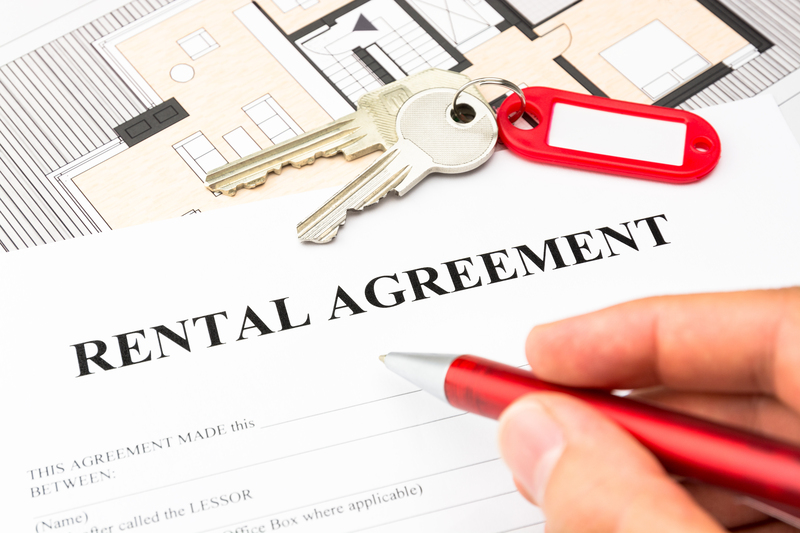Transforming a Chaotic Move Into a Stress-Free Transition: Your Ultimate Guide
Are you bracing yourself for an upcoming move? Moving to a new home--whether across town or to another state--can be one of life's most stressful events. Many people find themselves engulfed in chaos, overwhelmed by unending checklists, and dealing with unexpected hurdles. But what if you could transform a chaotic move into a stress-free transition? In this detailed guide, we'll give you actionable strategies, proven tips, and essential moving hacks to turn your relocation into a smooth and enjoyable experience.

Why Does Moving Feel Chaotic?
Before we dive into the solutions, let's examine why moving often feels overwhelming:
- Disorganization: Without a structured plan, important tasks easily get lost in the shuffle.
- Time Constraints: Balancing work, family, and moving logistics leads to stress and fatigue.
- Emotional Attachment: Leaving behind memories and familiar places can create feelings of anxiety.
- Logistical Demands: Coordinating moving trucks, packing, and utilities requires careful attention to detail.
- Unexpected Issues: Lost items, delayed movers, and last-minute surprises can throw everything into disarray.
It's no wonder so many people associate moving with chaos. But with some planning and the right mindset, transforming a stressful move into a seamless transition is entirely possible.
The Power of Planning: Start Early
The foundation of a stress-free move is early preparation. Start as soon as you know you'll be relocating:
1. Create a Moving Timeline
- 8 Weeks Out: Research neighborhoods, schools, and moving companies. Purge your belongings.
- 6 Weeks Out: Collect packing supplies, notify your landlord or schedule the sale of your house.
- 4 Weeks Out: Begin packing non-essential items and labeling boxes.
- 2 Weeks Out: Confirm move date with movers, update your address, and transfer utilities.
- Moving Week: Pack essentials, clean your current home, and perform final checks.
Having a structured timeline helps alleviate last-minute rushes and transforms chaotic moving days into organized events.
2. Use a Moving Checklist
A detailed moving checklist is invaluable in ensuring nothing slips through the cracks. List every task, big or small, and check them off as you go.
Getting Organized: Declutter and Downsize
One of the top stressors during a move is realizing you own too much stuff. Transform a chaotic move into a stress-free transition by decluttering first:
- Sort Room by Room: Let go of items that no longer serve you. Donate, sell, or recycle.
- Use the 12-Month Rule: If you haven't used it in a year, consider letting it go.
- Organize as You Pack: Group similar items and label everything clearly.
Not only does this lighten your load, but it also ensures a much smoother moving and unpacking process on the other side.
Packing Strategies for a Seamless Move
1. Gather High-Quality Packing Supplies
Arm yourself with sturdy boxes, bubble wrap, packing paper, tape, and markers. Investing in quality supplies protects your belongings and reduces the risk of last-minute panics.
2. Label, Label, Label
Clearly mark each box with its contents and the destination room. This small habit transforms chaotic unpacking into an efficient, organized process. Using colored stickers for each room is a great visual aid for movers.
3. Pack an "Essentials" Box
Nothing is more stressful than rummaging through boxes to find medication, toiletries, or important documents. Save yourself time by setting aside a box with:
- Medications and basic toiletries
- Chargers and electronic devices
- Change of clothes
- Snacks and bottled water
- Important paperwork and valuables
4. Protect Fragile Items
Wrap dishes, electronics, and other breakables in plenty of padding. Mark these boxes as "fragile" so they receive extra care.
Choosing the Right Moving Support
A major factor in transforming a chaotic transition into a stress-free move is delegating tasks to the right people. Do you plan to move yourself, hire movers, or combine both approaches?
1. DIY Move vs. Professional Movers
- DIY Moving: Gives you full control, but requires more time and effort. Best for smaller moves or those on a budget.
- Hiring Movers: Professional movers bring expertise, tools, and manpower--ideal for families, long-distance moves, or heavy furniture.
If budget allows, consider a hybrid approach: pack and prep yourself, but hire movers for heavy items and transport. This strikes a balance between control and convenience.
2. Vetting Moving Companies
Before hiring a moving company, research thoroughly:
- Read recent online reviews.
- Ask friends or family for recommendations.
- Check licensing and insurance status.
- Request a written estimate and review the contract carefully.
Managing the Emotional Side of Moving
Not all stress is physical. Moving often stirs up emotions--from excitement to sadness. Here's how to manage your feelings for a healthier transition:
- Say Goodbye: Visit favorite places and connect with friends before you leave.
- Share Good Memories: Reminisce with family about happy moments in your old home.
- Embrace the New Chapter: Focus on what excites you about your new home or location.
- Give Yourself Time to Adjust: Moving is a major life event. Allow yourself to feel and process the change.
Transition Smarter: Setting Up Your New Home
Arriving in your new home is just the beginning. Carry calm and order through the next steps:
- Start With Essentials: Set up beds, bathroom, and kitchen basics first. This makes your space functional and comfortable from day one.
- Unpack Methodically: Take on one room at a time to avoid feeling overwhelmed.
- Personalize Slowly: Display favorite photos and keepsakes early on so your new place feels like home.
- Inspect Your Space: Identify any damages, locate circuit breakers, and ensure all utilities are functional.
Smart Technology for a Smoother Move
1. Digital Moving Tools
Use technology to streamline your transition. Moving apps can help you manage tasks, inventory your belongings, and even create floor plans for your new home.
2. Virtual Tours and Floor Plans
If possible, visit your new home virtually before moving day. Use online tools to plan furniture layouts, ensuring a seamless move-in.
Family and Pets: Ensuring a Stress-Free Transition for All
1. Moving With Children
- Explain the process honestly and involve kids in decisions (let them choose room colors, etc.).
- Maintain routines as much as possible to provide stability.
- Pack a special "moving day" bag with their favorite toys, books, and snacks.
- Plan a fun "goodbye" ritual for the old home.
2. Moving With Pets
- Keep pets in a quiet, safe space during packing and moving day.
- Update their ID tags and ensure vaccinations are current.
- Set up their bedding, toys, and food in a designated area of the new home as soon as possible.
Common Mistakes to Avoid
- Procrastinating: Starting too late leads to rushed decisions and forgotten tasks.
- Overpacking Boxes: Heavy boxes can break and increase injury risk.
- Neglecting to Update Address: Notify banks, subscriptions, and government agencies ahead of time.
- Ignoring Insurance: Check your homeowner's insurance or moving insurance for coverage during transit.
- Skipping Inventory: Keep a record of your belongings for easier unpacking and potential insurance claims.
Extra Hacks for a Stress-Free Move
- Use What You Have: Pack fragile items in towels, sheets, and blankets for extra cushioning.
- Photograph Electronics: Take pictures of how cords are connected--makes reassembly a breeze.
- Color-Code Rooms: Assign a color to each room to make box delivery easy for movers.
- Schedule Overlaps: If possible, allow for a few days' overlap between homes to give yourself extra time.
- Ask for Help: Friends, family, and professionals can all reduce your workload and lower your stress.
After the Move: Settling Into New Routines
The chaos doesn't automatically end when the last box enters your new home. Give yourself time to adapt and settle:
- Explore your new neighborhood and introduce yourself to neighbors.
- Register kids for schools, update pet information, and find new health providers.
- Celebrate with a "new home" dinner or small get-together--marking the transition can help you feel positive about the change.
- Continue organizing and decorating over several weeks. A staged approach is much less stressful than rushing.

Frequently Asked Questions About a Stress-Free Move
1. How far in advance should I start planning my move?
Ideally, start planning two months before your move. Early planning allows for decluttering, vetting moving companies, and handling logistics at a comfortable pace.
2. What is the best way to keep my move organized?
The key to an organized move is a detailed checklist and timeline. Break tasks into weekly goals, label all boxes, and keep essential items accessible.
3. How can I make moving less stressful for my kids and pets?
Communicate openly, maintain routines, involve them in the process, and create a safe, comfortable environment in the new home as quickly as possible.
4. Are professional movers worth the expense?
For most people, professional movers significantly reduce stress--especially for large families or long-distance moves. Weigh your budget and priorities to decide.
Conclusion: Make Your Next Move Stress-Free and Successful
Transforming a chaotic move into a stress-free transition is not just a dream--it's an achievable goal with a little forward-thinking, organization, and the right help. From meticulous planning and strategic packing to emotional wellness and technological tools, you now have a comprehensive blueprint to ensure a successful relocation.
Remember, every move is an opportunity for a fresh start. With these stress-free moving tips, you'll turn your next move into the seamless, positive experience you deserve.
Ready to turn chaos into calm? True success lies in preparation--so start today, and embark on this exciting new chapter with confidence and ease!



